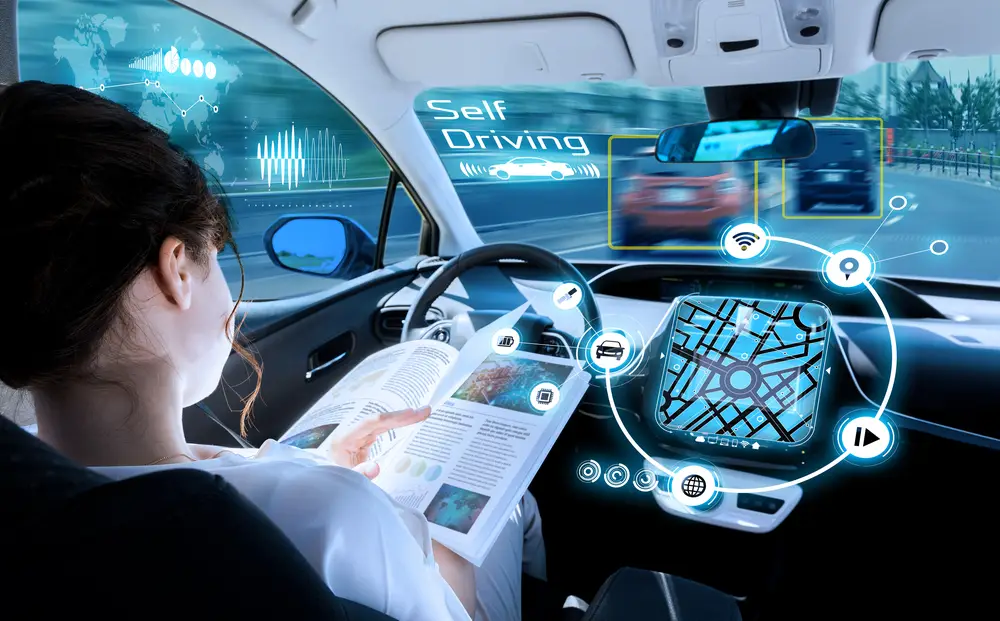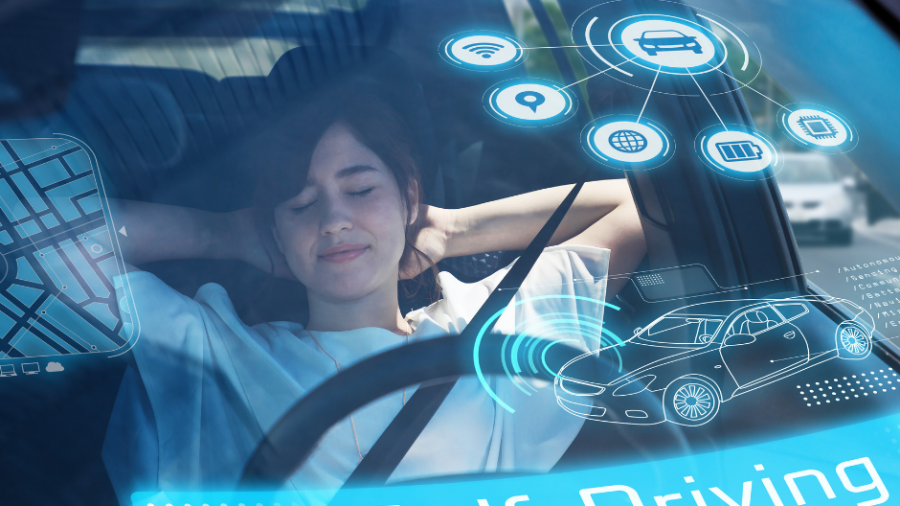Self-driving technology, once a concept limited to science fiction, is now rapidly becoming a reality. The journey from early autonomous vehicles to today’s advanced self-driving cars has been marked by groundbreaking advancements in engineering, artificial intelligence, and data science. In this post, we’ll explore the evolution of self-driving technology, from its beginnings to its current state and its future potential.

The Early Days of Autonomous Vehicles
The concept of self-driving cars isn’t as new as it may seem. In fact, the first experiments with autonomous vehicles date back to the 1920s. However, significant advancements didn’t begin until the 1980s when researchers started to develop the first functional prototypes. In 1986, the Carnegie Mellon University team developed a car called the “Navlab,” which used early sensor technology, including radar and cameras, to navigate without human intervention. Though these early cars were far from perfect, they marked the beginning of serious research into autonomous vehicles.
The real breakthrough came in the 2000s with the DARPA Grand Challenge, a competition aimed at advancing autonomous vehicle technology. Teams from universities and private companies competed to design self-driving cars that could navigate a desert terrain. The success of this event helped catalyze public and private investments in self-driving technology, leading to faster innovation in the field.
Key Technologies Behind Self-Driving Cars
The success of self-driving cars relies on several key technologies working in unison. These technologies have evolved over time and continue to improve, making fully autonomous vehicles a closer reality:
- Lidar: Light Detection and Ranging (Lidar) technology uses laser sensors to create high-resolution maps of the environment, allowing cars to detect objects and obstacles with high precision. Lidar has become one of the most essential components of autonomous vehicles, providing accurate 360-degree vision in all weather conditions.
- Cameras and Sensors: Cameras capture visual data that helps the car “see” the world around it. Combined with radar and ultrasonic sensors, these devices allow the car to recognize road signs, lane markings, pedestrians, and other vehicles.
- Artificial Intelligence (AI): AI algorithms are the brain behind self-driving cars. They analyze the data from sensors and cameras, making decisions in real time. Machine learning algorithms enable cars to “learn” from experience, improving their performance with each journey.
- Mapping and GPS: Autonomous cars rely on detailed maps and GPS technology to navigate. These maps are updated regularly to ensure that the car knows the exact location of roads, intersections, and other features, even in unfamiliar areas.
As these technologies continue to evolve, the accuracy, safety, and reliability of self-driving cars improve, bringing us closer to widespread adoption.
The Role of Industry Leaders
In the last decade, companies like Google (now Waymo), Tesla, and Uber have played a significant role in advancing self-driving technology. Waymo, which began as Google’s self-driving car project, has become a leader in the field, having tested its vehicles in real-world conditions for over a decade. The company’s autonomous minivans and electric vehicles have achieved significant milestones, including operating driverless cars in select cities.
Tesla, under the leadership of Elon Musk, has also been at the forefront of self-driving innovation. Tesla’s “Autopilot” feature, which offers semi-autonomous driving capabilities, is one of the most well-known systems available to consumers. Tesla continuously updates its self-driving technology through over-the-air software updates, enabling its cars to become smarter and more capable over time.
Uber, another key player, has focused on developing autonomous ride-sharing services. Although its efforts have faced some setbacks, including the temporary suspension of its self-driving program after a fatal accident, Uber’s work has contributed to the overall development of autonomous vehicle technology.
Current State of Self-Driving Technology
Today, self-driving technology is far more advanced than it was even five years ago, but full autonomy (Level 5) is still out of reach for most automakers. Self-driving vehicles are categorized into levels based on their degree of automation, ranging from Level 1 (basic driver assistance) to Level 5 (full automation). As of now, most self-driving systems are classified as Level 2 or Level 3, meaning they require human supervision.
For example, Tesla’s Autopilot is a Level 2 system that can control the car’s speed, steering, and braking, but the driver must remain alert and be ready to take over at any time. Waymo’s cars, on the other hand, are operating at Level 4 in select areas, meaning they can drive autonomously in specific geofenced locations but may still need human intervention in certain situations.
Autonomous vehicles are already being used in certain commercial applications, such as freight transport and autonomous taxis. Companies like Waymo and Cruise are testing driverless taxis in cities like Phoenix and San Francisco, offering a glimpse into a future where fully autonomous vehicles are part of daily life.
The Future of Self-Driving Technology
The future of self-driving technology holds enormous potential. With advancements in AI, machine learning, and sensor technologies, we can expect even greater improvements in safety, efficiency, and convenience. Some key trends that will shape the future of self-driving cars include:
- Increased Safety: Autonomous vehicles have the potential to drastically reduce accidents caused by human error, which accounts for over 90% of traffic accidents. As technology improves, the likelihood of accidents will decrease, making roads safer for everyone.
- Widespread Adoption: In the coming years, we could see the widespread adoption of autonomous vehicles, particularly in urban areas. Self-driving taxis, delivery vehicles, and public transportation systems are likely to become more common, revolutionizing how we move around.
- Regulation and Ethics: As self-driving cars become more common, governments and regulatory bodies will need to establish guidelines for their operation. Issues like liability, insurance, and ethical decision-making will become increasingly important as autonomous cars take to the roads.
- Environmental Impact: Autonomous cars could contribute to reducing traffic congestion and lowering carbon emissions. When combined with electric vehicle technology, self-driving cars have the potential to make transportation more sustainable.
In the next decade, we could see a dramatic shift in how we think about mobility. Self-driving technology could change not only the automotive industry but the way we design cities and infrastructure, with fewer parking spaces and more efficient traffic flow.
Conclusion
The evolution of self-driving technology has been a remarkable journey, with decades of research and innovation paving the way for fully autonomous vehicles. From early prototypes in the 1980s to the cutting-edge cars we see today, the advancements in AI, sensors, and data processing have brought us closer to a future where autonomous vehicles are a common sight on our roads. While full autonomy is still a work in progress, the rapid pace of development suggests that self-driving cars will soon play a major role in our daily lives, making transportation safer, more efficient, and more convenient for everyone.











